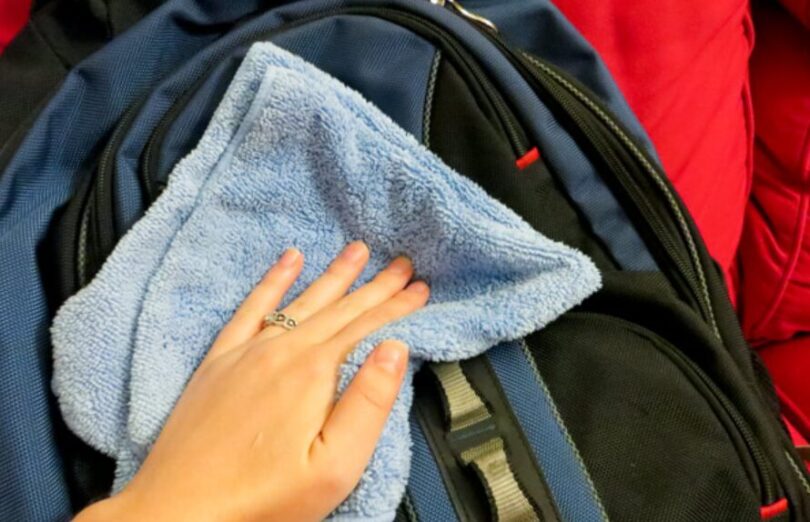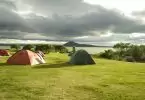Every outdoor enthusiast knows that taking proper care of your backpack is extremely important. However, more often than not, you might accidentally not wash and maintain your backpack the proper way, thus taking out of its lifespan without even being aware. If you’re interested in saving a few bucks and not buying a new backpack every year, then learning how to wash a backpack might help you out! Different backpacks and different materials require different cleaning methods, but there are still some general rules that apply to every material.
Don’t forget that regular cleaning and washing will not only preserve the essential features of the backpack but will also extend your backpack’s life, helping you get the most out of your equipment piece. This is exactly the purpose of our article – to reveal you how to wash and how to clean a backpack in the safest and easiest way.

We also wanted to show you the difference between washing and cleaning your backpack, so we’ve also developed a couple of step-by-step guidelines that can show you the right methods for properly taking care of your backpack. Read on to find out more!
Why It’s Important to Properly Wash Your Backpack
This question might seem like a silly one with an obvious answer, but there are actually few very important reasons that are often neglected – but need to be stressed out. First, come the hygiene and the importance of placing your clean clothing and equipment in a clean backpack.
All of the things you need are packed in your backpack, including clothing and food – and therefore it should be clean and well-kept. Backpack’s regular washing and cleaning play a huge role not only in backpack’s protection but also in skin protection.
While being in the mountains the backpack is often placed on the ground and dirt and dust stick to its surface. Salts from the sweat and oil from the skin also seep into the hip belt and the shoulder straps. So, if the all this dirt stays on the backpack, it can cause skin irritation and allergies, especially in summer.
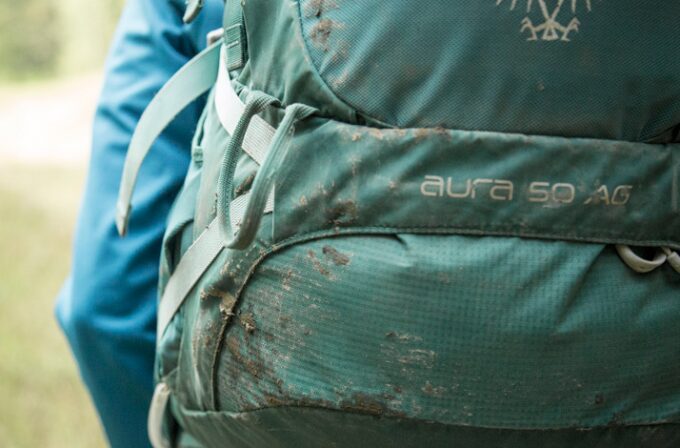
The special features that every outdoor backpack has may not require daily washing, but they certainly require care and regular cleaning. The waterproof materials, the elastic pockets, and internal frames should be treated with detergents and soaps made for such materials in order not to damage them.
The dirt shouldn’t be left for too long on this kind of materials because it’ll affect their durability and resistance. Other parts of the backpack can also get damaged and become useless because of dirt.
If not cleaned, the zippers can easily get stuck causing you trouble when you need them. The food bits will probably invite insects or even worse, parasites that can cause serious health problems.
Know the difference – Washing vs. Cleaning
Cleaning the backpack is something that needs to be done more often – after every hike or outdoor training a light cleaning should follow. The light cleaning doesn’t take a lot of time and it helps you keep your equipment and backpack clean. Simply grab a wet cloth and scrub the dirty spots, and then leave the backpack to air dry.
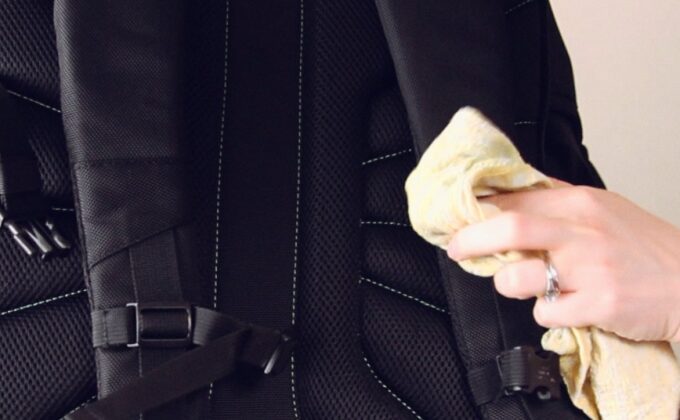
On the other hand, deep cleaning is advisable only after a long hike which lasted more than four or five days. This type of cleaning includes washing the backpack with warm water – so it also shouldn’t be performed too often.
How Often Should You Wash Your Backpack?
This depends on the backpack’s features and materials. A hiking backpack is made to be waterproof or it has a rain cover – if the fabric doesn’t promise complete water-resistance.
Before washing or cleaning the backpack you should find information about the backpack’s fabric and you should know its features – these will be familiar to you because you certainly proved them before buying the backpack.
A backpack, no matter if a daypack or a large backpack shouldn’t be washed more than two times a year. Too much washing will damage the waterproofing and lessen the backpack’s ability to repel water. Twice a year is more than enough to keep the backpack clean – while rainy hikes the backpack will be however protected with a rain cover.
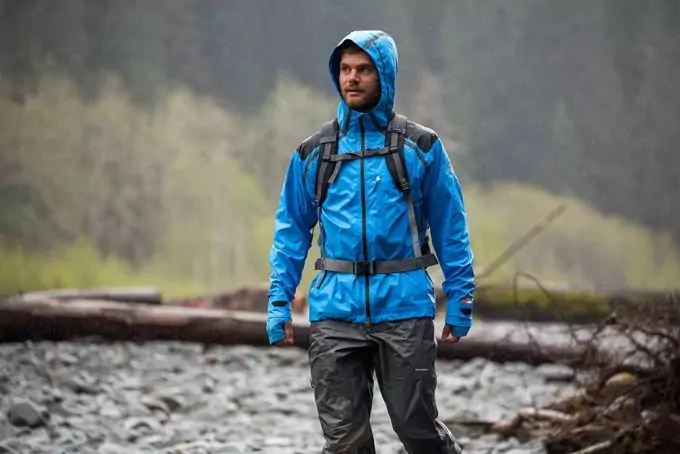
After washing the backpack you can use waterproof sprays to renew and refresh lost coating. Waterproof sprays are often sold together with the backpacks – they don’t cost much and can help you prolonged the backpack’s life.
Before using a waterproof spray you should make sure that the backpack is clean and dry. The waterproof sprays can be also used before going on a hike – they’ll refresh and improve the waterproofing.
Things to Get You Started
Although some daypacks can be washed in a washing machine, this is not advisable and can damage not only the backpack but also the washing machine.
Actually, on the most care labels, it’s stressed out that the backpack should never be washed in a washing machine – especially if it’s a large backpack. However, some backpacks can be washed in a washing machine – if you’re in a hurry.

That’s why you’ll need some cleaning materials and tools – not special ones that need to be bought, but some that you certainly have in your home. Here’s a short list of these cleaning products that can help you keep your backpack clean without damaging the fabrics.
- Soap – preferably unscented and it should be without detergent. The most appropriate soaps for this kind of fabrics are the castle soaps that will not affect the waterproofing of the materials.
- Special washing liquids – these are not a must-have, but certainly recommendable if you are an outdoor lover. These washing liquids are made especially for waterproof materials and don’t affect the fabric’s performance. They are often used for jackets and pants but are also a perfect fit for your backpack.
- Clean sponge or washcloth – these are used for spot-cleaning and allow you to take all of the dirt and dust of your backpack without damaging the material.
- Toothbrush or soft (not stiff) brush – with the toothbrush you can scrub the dirty spots and also the whole backpack. These materials won’t affect or damage the backpack’s performance and will certainly clean it well.
How to Wash a Backpack
While it’s true that most backpacks shouldn’t be washed in a washer, there are some daypacks or simple every day’s packs that from time to time can be put in the washing machine. But, washing your backpack in a washer is something that you should avoid – if you want to prolong the backpack’s life.

Washing the backpack with the cleaning tools is more time consuming, but on the other hand, protects the fabric and the backpack’s performance – and having a long-life backpack is something every outdoor lover will be proud of. There are however two ways to wash the backpack and here is the step-by-step washing guideline.
Machine Wash Your Backpack
Again, if the material of your backpack allows for it, you can try washing your backpack in a washing machine.
- Firstly, check the backpack’s care label to make sure that the backpack can be washed in a washer without affecting its performance or damaging the fabrics. All important information about the material and the backpack’s care can be found on this label.
- After you checked the care label, start emptying the backpack – not a single part of the equipment or of the clothing can be left inside. Turn it inside out and make sure even the smallest compartments are empty. A vacuum cleaner can be used to make sure the food bits won’t also be washed.
- Leave the pockets unzipped and the straps unfastened – the water should also get to the deepest parts of the pockets where all food bits tend to hide.
- Take off all added clip-on accessories, metal frames, and removable straps. These parts need to be hand-washed. The most important part here is the metal frame – if your backpack has one, you must remove it, because it will damage the washer. These accessories can be left in a warm water to soak for about 30 minutes.
- Before putting the backpack in the washer, check if there are any stains that need to be treated before machine washing. Pre-treat the stains with a soft brush and soap and scrub the stain before washing the backpack.
- The backpack shouldn’t be put in the washer unprotected. Place it in an old pillowcase or a laundry bag and then place the backpack in the washer.
- When washing the backpack in a washer, the machine should be set on its gentle cycle.
- Once the cycle is finished, take the backpack out of the laundry bag and use a towel to wipe down all pockets.
- Hang the backpack with open pockets and zippers and allow it to air dry.
Hand Wash Your Backpack
On the other side, if you’re not a daredevil when it comes to your precious equipment, here are some simple guidelines to help you out in hand washing your backpack.
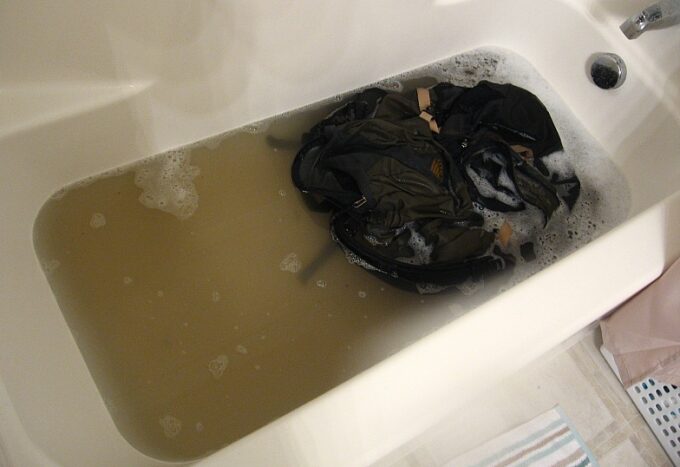
- Firstly, prepare all cleaning tools and materials you’ll need to wash the backpack, such as toothbrush, plastic tub or a bathtub. A large sink can also be used, of course, if it’s clean.
- Make sure the backpack is empty – check all pockets for food bits, clothing or gear. Shake the backpack upside down to get rid of the dust and dirt, but also to check if there’re forgotten gear items. Forgetting something inside during a hand wash will not cause any trouble with the washer of course, but it can damage important gear.
- Remove all clip-on accessories, straps or metal frames. These parts should be washed separately and attached to the backpack when dry.
- Fill the sink or the plastic tub with lukewarm water. Hot water shouldn’t be used because it can cause the colors to bleed. Make sure to have enough room in the tub so that all parts of the backpack can be really wash out.
- After filling the plastic tub with warm water, add washing liquid suitable for washing the backpack’s material or gentle detergent. You can also use soap (castile soap) to scrub the stains or to simply gentle scrub the whole backpack.
- When the backpack is soaked in the lukewarm water you can start scrubbing the material with a soft brush or an old toothbrush. If there are some stains a little soap on the spot can be added and these can be scrubbed with the toothbrush. For delicate materials instead of a toothbrush, a sponge or a gentle washcloth can be used.
- After scrubbing and washing the backpack, rinse it carefully with lukewarm water. Pay attention to the soap and detergent residues – these must be rinsed because they certainly don’t look nice on a freshly washed backpack.
- Wring out the washed backpack. If the backpack is big or the material rough, you can simply put it on a towel and also put towels inside to soak the water of the backpack.
How to Clean Your Backpack
You can either perform a light or a deep backpack cleaning. The light cleaning supposed to be done after every outdoor hike or training – it’s better to clean the dust off the backpack before it leaves stains on the material. Deep cleaning should be performed after a rainy hike or after a long outdoor stay.
Light Cleaning
After every hike or outdoor stay, a light cleaning should be done – the food bits, the smelly clothes or the forgotten gear should be taken out of the backpack. The light cleaning doesn’t affect the backpack’s fabric so much and its ability to repel water. In order to do a light cleaning, the following steps should be followed:

- The pockets should be emptied and the backpack turned upside down, so the dust and dirt don’t stay on it for too long.
- Use a clean sponge to wipe down the backpack. No soap or water is needed. If there is a stain, you can use a little soap and water to get rid of the stain.
- Rinse the soap with clean cool or lukewarm water.
- When the backpack is dry, you can place it in your closet.
Deep Cleaning
The deep cleaning is not necessary after every hike – it can be done after a long hike or camping in the mountains. The deep cleaning also requires water and scrubbing – it’s not advisable to do it so often.
- Firstly, the backpack should be emptied and then gently vacuumed all the way down to the bottom of the backpack. Don’t forget the side pockets or small compartments
- The added clip-on accessories should be cleaned separately. The straps and the hip belt can be rinsed with lukewarm water and washed with a small dose of detergent or with soap
- If the backpack is not too dirty you don’t have to put it in a sink or a plastic tub – it can be simply spot-cleaned with water and soap. If the backpack needs to be well cleaned, then you should scrub the stains with a lukewarm water and leave the backpack about 30 minutes to soak
Dry Your Backpack Properly
Washing your backpack does require some time and attention, but the drying also has some requirements of its own. Maybe information about drying the backpack can’t be found on all of the care labels, but this also needs to be learned.
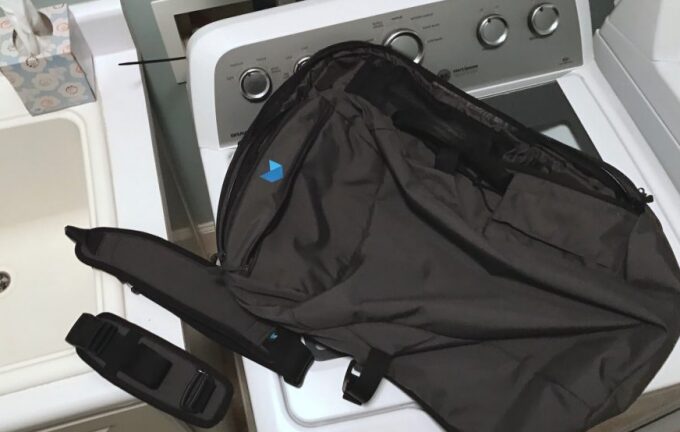
Image credit: blog.minaal.com
When the backpack is washed it can be hanged outside or placed on towels. Do not put the backpack in a dryer – it can damage the fabrics and lessen the performance. The backpack shouldn’t also be placed in direct sunlight – leaving the backpack in the sunlight for too long can also affect its features.
Before placing essentials back inside, you should make sure that the inside of the backpack is dry, including all zippers, small pockets, and removable clip-ons – leaving your backpack wet can increase the chance of growing mold in it.
Ready to Show Your Backpack Some Love?
Before starting washing or cleaning the backpack, always make sure what your backpack actually needs in that moment. There is no need to wash the backpack after every hike – this will not only take to much of your time, but it will also damage the fabric and shorten the backpack’s life. Choosing and implementing the right method is essential when it comes to backpack’s care.
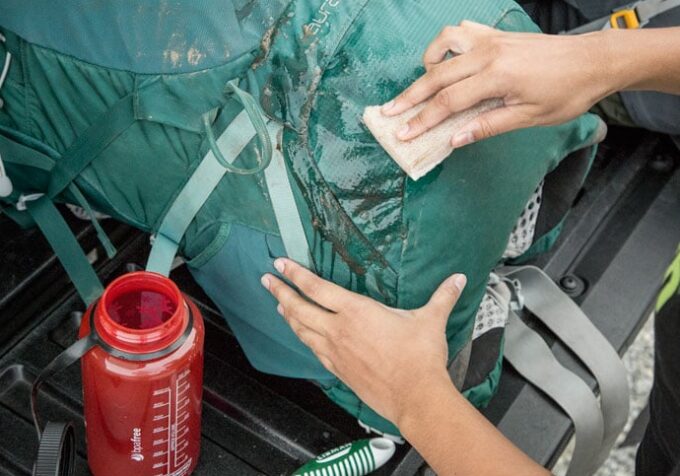
Another thing you should always pay attention to – even if you’re an experienced outdoor lover – is the care label. All information including washing and cleaning are written on the label and must be considered before doing anything with the backpack.
The backpack’s washing and cleaning may seem too complicated and time-consuming at the beginning – but the backpack is an investment which should be taken care of. We also must admit that some of the cleaning procedures can take time – however, it’s better to take care of the backpack instead of just neglecting it.
Buying a new backpack is not a daily decision and investment. These are the most important tips and tricks that can prolong your backpack’s life. But, if you have anything to add, leave us a comment and let us know – we would be happy to hear back from you!

